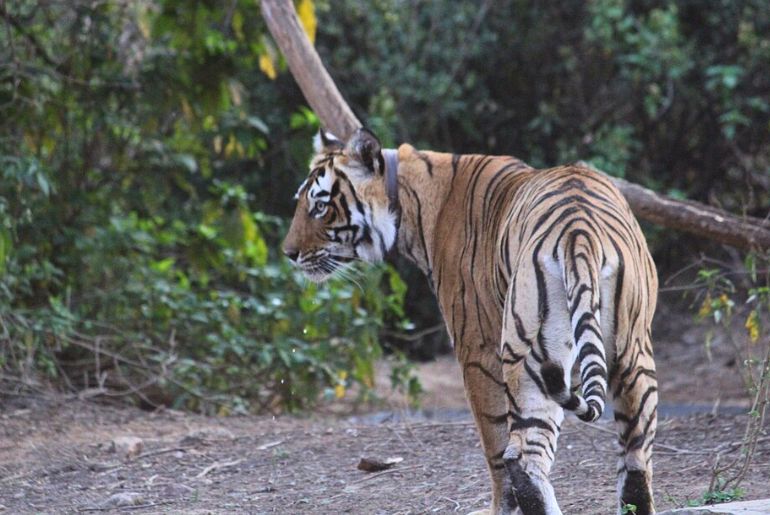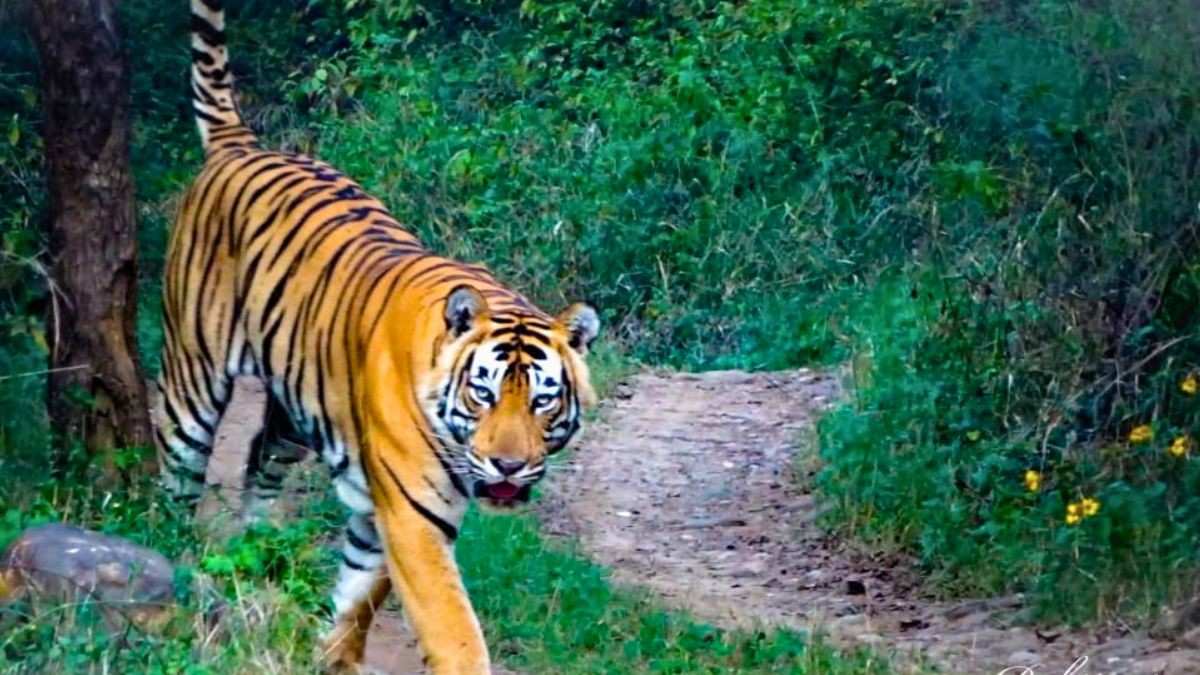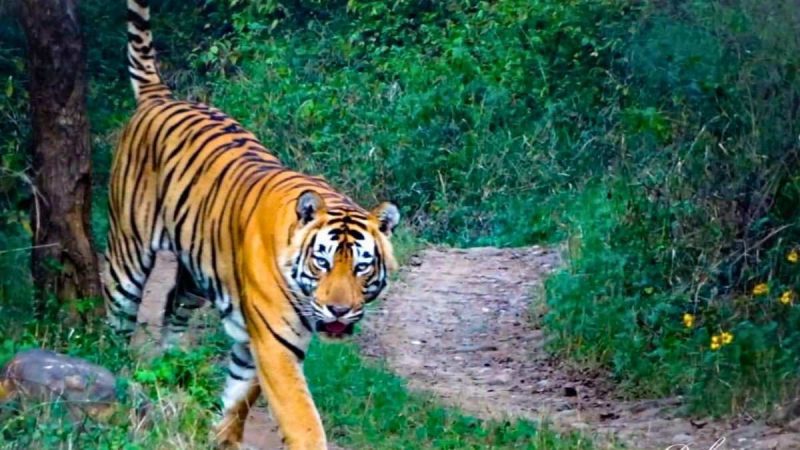There are now plans to redraw the Sariska Tiger Reserve boundaries, which could reopen over 50 mining operations previously shut down by the Supreme Court. The proposal has raised serious concerns for wildlife and poses a threat to the reserve’s ecosystem and conservation.
Proposal To Redraw The Boundaries Of Sariska Tiger Reserve

As per a report in The Telegraph India, a new proposal is making the rounds to change and redraw the boundaries of Rajasthan’s Sariska Tiger Reserve. Located in Alwar, Sariska is a core tiger habitat with arid forests, grasslands and rocky hills. Sources say the plan involves removing 48.39 sq km of ‘human-impacted’ hilly terrain from the reserve’s Critical Tiger Habitat (CTH). This would allow over 50 mining operations, once ordered shut by the Supreme Court, to start again.
Additionally, the report states that 90.91 sq km of ‘quality tiger habitat’ from the buffer zone will be added to make up for the loss. Rajasthan’s Head of Forest Force (HoFF), Arijit Banerjee, confirmed that the plan to redraw the CTH boundary was proposed in the wildlife board meeting on Monday and passed. However, it is still waiting for approval from the National Board for Wildlife (NBWL).
Also Read: Sariska National Park Welcomes Four Tiger Cubs After Tigress Gives Birth To New Litter
A Risky Trade-Off Between Wildlife And Mining
Officials may see this as a way to balance conservation and economic goals. But many wildlife experts have raised concerns. A Supreme Court directive from May 2024 had ordered the closure of 57 mines producing marble, dolomite, limestone, and masonry stone. These sites were all within 1 km of the CTH boundary. If this proposal is cleared, over 50 mines will be reactivated outside the no-mining zone. These include sites in villages like Khoh, Palpur, Tilwad, Gordhanpura, Mallana, Doondpuri, Jaisinghpura, and Kalwar.
Dr Dibyadeep Chatterjee, a consultant at Chester Zoo, UK, and a former researcher at the Wildlife Institute of India, told The Telegraph that changing the boundary for economic goals may seem valid, but must be backed by ecological reasoning. Without that, it could damage both conservation efforts and public interest. He also called it a “risky trade-off”. Moreover, Debadityo Sinha, Lead of Climate and Ecosystems at the Vidhi Centre for Legal Policy, added that mining brings human activity, transport pressure, mine spoil and more. He said this new proposal is not in the interest of wildlife at all.
Also Read: Not Just Ranthambore, You Can Now Spot Tigers In Rajasthan In This New Reserve
The NBWL has not yet cleared the plan. It is still under review. Even if it is accepted, the proposal will have to go through the Supreme Court for final approval. Many conservationists warn that the plan could have serious consequences for the Sariska Tiger Reserve.
Sariska National Park in Alwar, Rajasthan, is a vital tiger reserve in India. Reopening mining operations could cause long-term damage to its ecosystem and conservation efforts. Let us hope the final decision takes the interests of wildlife into account.
Cover Image Courtesy: OBMS Government of Rajasthan/ Website
For more such snackable content, interesting discoveries and the latest updates on food, travel and experiences in your city, download the Curly Tales App. Download HERE. First Published: June 30, 2025 12:33 PM




